

Johns Hopkins University (JHU) continues to pad its space community résumé with their interactive map, “The map of the observable Universe”, that takes viewers on a 13.7-billion-year-old tour of the cosmos from the present to the moments after the Big Bang. While JHU is responsible for creating the site, additional contributions were made by NASA, the European Space Agency, the National Science Foundation, and the Sloan Foundation.
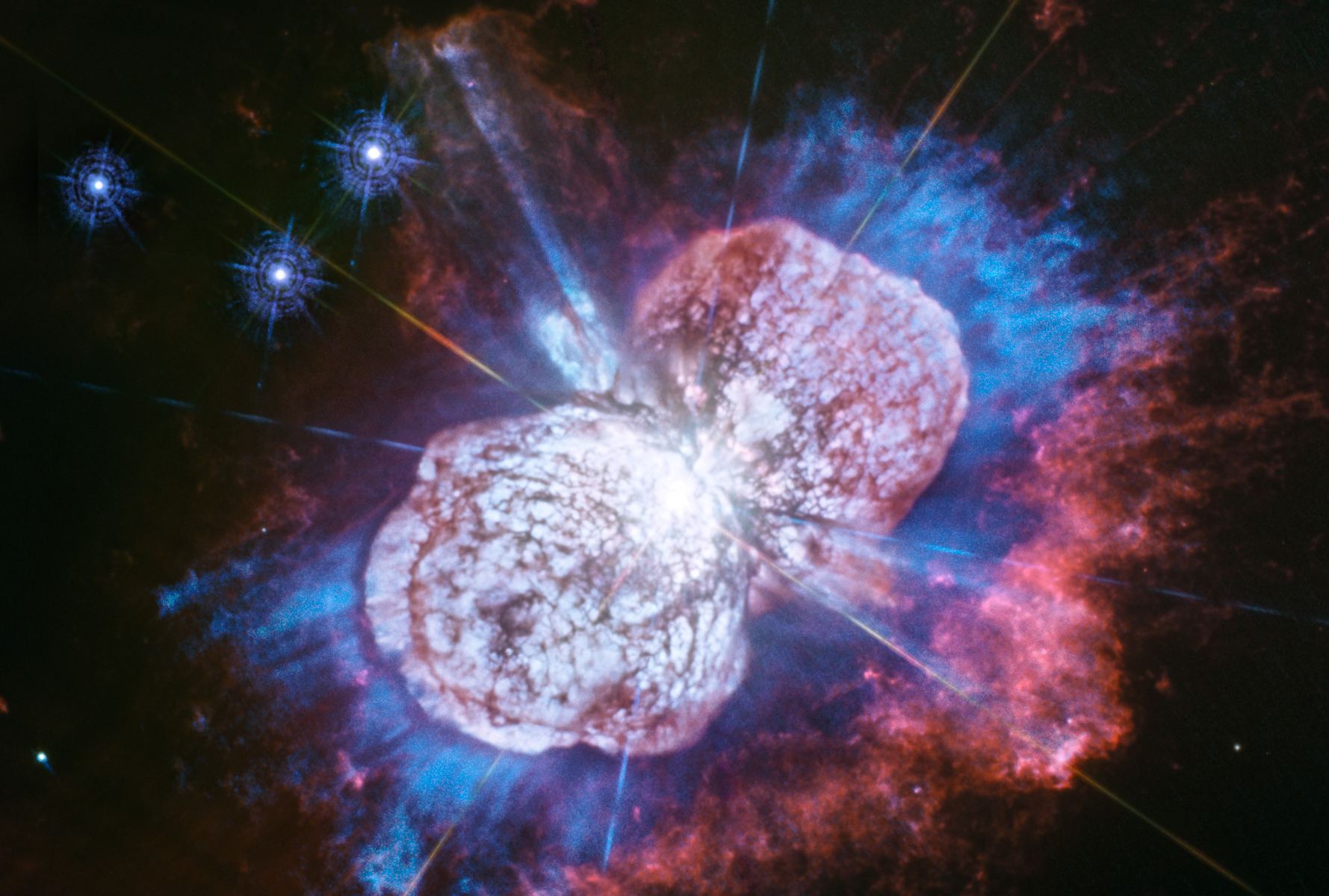
Astronomers used Hubble’s Wide Field Camera 3 to probe the Homunculus nebula in ultraviolet light. They uncovered the glow of magnesium embedded in warm gas (shown in blue) in places they had not seen it before. The luminous magnesium resides in the space between the dusty bipolar bubbles and the outer shock-heated nitrogen-rich filaments (shown in red). The streaks visible in the blue region outside --> the lower-left lobe are a striking feature of the image. These streaks are created when the star’s light rays poke through the dust clumps scattered along the bubble’s surface. Wherever the ultraviolet light strikes the dense dust, it leaves a long, thin shadow that extends beyond the lobe into the surrounding gas. Image Credit: NASA, ESA, N. Smith (University of Arizona, Tucson), and J. Morse (BoldlyGo Institute, New York)
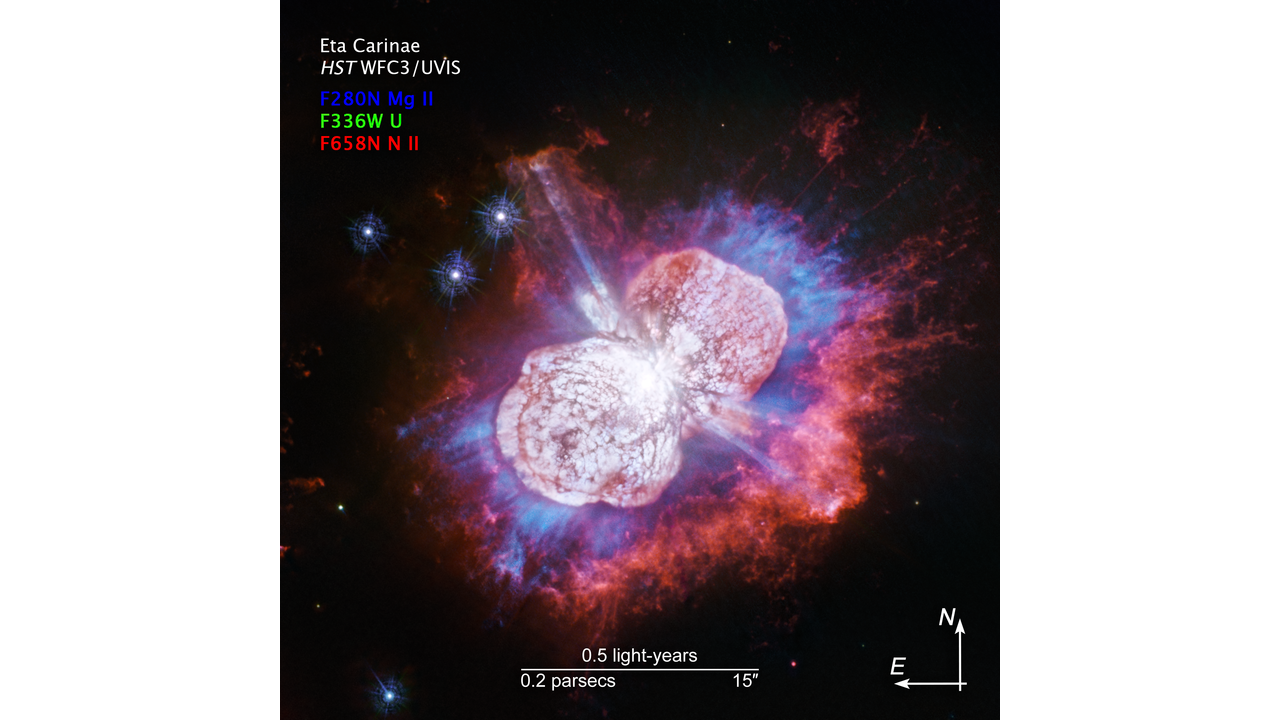
GIANT STAR YIELDS NEW CLUES ABOUT TURBULENT LIFE This Hubble Space Telescope image of the giant, petulant star Eta Carinae is yielding new surprises. Telescopes such as Hubble have monitored the super-massive star for more than two decades. The star, the largest member of a double-star system, has been prone to violent outbursts, including an episode in the 1840s during which ejected material formed the bipolar bubbles seen here. Now, using Hubble's Wide Field Camera 3 to probe the nebula in ultraviolet light, astronomers have uncovered the glow of magnesium embedded in warm gas (shown in blue) in places they had not seen it before. The luminous magnesium resides in the space between the dusty bipolar bubbles and the outer shock-heated nitrogen-rich filaments (shown in red). The streaks visible in the blue region outside the lower-left lobe are a striking feature in the image. These streaks are created when the star's light rays poke through the dust clumps scattered along the bubble's surface. Wherever the ultraviolet light strikes the dense dust, it leaves a long, thin shadow that extends beyond the lobe into the surrounding gas. Eta Carinae resides 7,500 light-years away. CREDITS: NASA, ESA, N. Smith (University of Arizona), and J. Morse (BoldlyGo Institute)
This video pans over the star Eta Carinae viewed in ultraviolet light, as recently observed with the NASA/ESA Hubble Space Telescope. More information and download options: Credit: NASA, ESA, N. Smith (University of Arizona, Tucson), and J. Morse (BoldlyGo Institute, New York)
In the mid-1800s, mariners sailing the southern seas navigated at night by a brilliant star in the constellation Carina. The star, named Eta Carinae, was the second brightest star in the sky for more than a decade. Those mariners could hardly have imagined that by the mid-1860s the brilliant orb would no longer be visible. Eta Carinae was enveloped by a cloud of dust ejected during a violent outburst named “The Great Eruption. Because of Eta Carinae's violent history, astronomers have kept watch over its activities. Although Hubble has monitored the volatile superstar for 25 years, it still is uncovering new revelations. Using Hubble to map the ultraviolet-light glow of magnesium embedded in warm gas, astronomers were surprised to discover the gas in places they had not seen it before. For more information, visit Credit: NASA's Goddard Space Flight Center Paul R. Morris (USRA): Lead Producer Aaron E. Lepsch (ADNET): Technical Support Music credits: "Transcode" by Lee Groves [PRS], and Peter George Marett [PRS]; Killer Tracks Production Music This video is public domain and along with other supporting visualizations can be downloaded from the Scientific Visualization Studio at: See more Hubble videos on YouTube: Follow NASA's Hubble Space Telescope: · Facebook: · Twitter: · Instagram: · Flickr: Hubble's main nasa page: --- If you liked this video, subscribe to the NASA Goddard YouTube channel: Instagram · Twitter Nasa Goddard · Twitter Images · Facebook: · Flickr
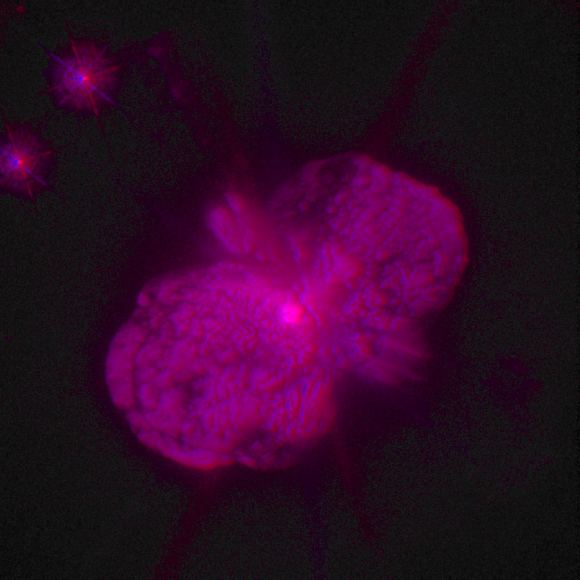
This rather garish picture is a unique three-dimensional image of the star Eta Carinae, with its twin lobes and equatorial disk of expanding dust and gas. To see the 3D structure the image must be viewed through colour 3D glasses with the left eye looking through a red filtered lens, and right eye looking through ablue filtered lens. Not likely you have a pair on hand, but it’s kind of cool anyway. Image Credit: Jon Morse (University of Colorado), Kris Davidson (University of Minnesota), and NASA/ESA
Professor Mike Merrifield holds a Titanium Eta Carinae in his fingertips. Deep Sky Videos: See more links in the rest of this video description. Additive Manufacturing at Nottingham: The 3D structure paper by Steffen, et al: History of Eta Carinae: 3D hydrodynamic simulations of binary colliding winds:(PDF) Mike Merrifield on Twitter: Visit our website at We're on Facebook at And Twitter at This project features scientists from The University of Nottingham Sixty Symbols videos by Brady Haran
This animation zooms in on the massive star system Eta Carinae, located in the Carina Nebula. During the zoom the Homunculus Nebula and finally the violent surrounding of Eta Carinae becomes visible. More information and download options: Credit: ESO, Digitized Sky Survey 2, A. Fuji, Nick Risinger ESA/Hubble, T. Preibisch. Acknowledgement: VPHAS+ Consortium/Cambridge Astronomical Survey Unit. Music: Johan B. Monell
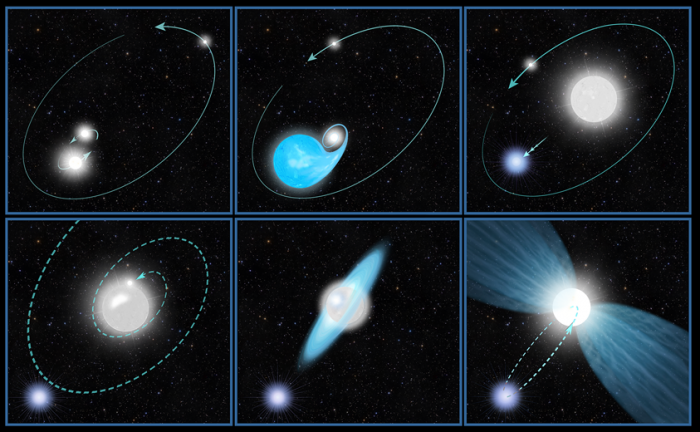
If you enjoyed the video, why not show your support for the channel and buy me a coffee?! Check out my new channel Vega Astro: STOCK FOOTAGE!!!! Thanks to channel members AmericaWest90 and supporters Chatsworth1979 / @vegaastrostockfootage Music by: Machinimasound Track: Rallying the Defense Composer: Per Kiilstofte : Download mp3 at This track is licensed to the public under Creative Commons Attribution 4.0 International: . in Acrux, Achenar (Alpha Eridani) and Hadar (Beta Centauri) - Southern Hemisphere STARS we look at three of the southern hemisphere's brightest stars. What would they be like at different distances and what would the dwarf planet Sedna be like if they were to form in the centre of our solar system? Search Terms Question: What is the distance from Earth to Beta Centauri? Translation: ¿Cuál es la distancia de la Tierra a Beta Centauri? (Spanish) Translation: 地球到半人马座β星的距离是多少? (Chinese - Simplified) Translation: Quelle est la distance de la Terre à Beta Centauri ? (French) Translation: ما هي المسافة من الأرض إلى بيتا سنتوري؟ (Arabic) English: Question: Is Beta Centauri visible to the naked eye? Translation: ¿Es Beta Centauri visible a simple vista? (Spanish) Translation: 半人马座β星是否肉眼可见? (Chinese - Simplified) Translation: Beta Centauri est-elle visible à l'œil nu ? (French) Translation: هل يمكن رؤية بيتا سنتوري بالعين المجردة؟ (Arabic) English: Question: What is the temperature of Beta Centauri? Translation: ¿Cuál es la temperatura de Beta Centauri? (Spanish) Translation: 半人马座β星的温度是多少? (Chinese - Simplified) Translation: Quelle est la température de Beta Centauri ? (French) Translation: ما هي درجة حرارة بيتا سنتوري؟ (Arabic) English: Question: How old is Beta Centauri? Translation: ¿Cuántos años tiene Beta Centauri? (Spanish) Translation: 半人马座β星有多少岁? (Chinese - Simplified) Translation: Quel âge a Beta Centauri ? (French) Translation: كم عمر بيتا سنتوري؟ (Arabic) English: Question: Are there any planets orbiting Beta Centauri? Translation: ¿Hay planetas orbitando alrededor de Beta Centauri? (Spanish) Translation: 有行星绕半人马座β星轨道运行吗? (Chinese - Simplified) Translation: Y a-t-il des planètes en orbite autour de Beta Centauri ? (French) Translation: هل هناك كواكب تدور حول بيتا سنتوري؟ (Arabic) Message ChatGPT… ChatGPT can make mistakes. Cons
Illustration of a possible scenario for the powerful blast seen 170 years ago (from 2018) from the star system Eta Carinae. Credit:
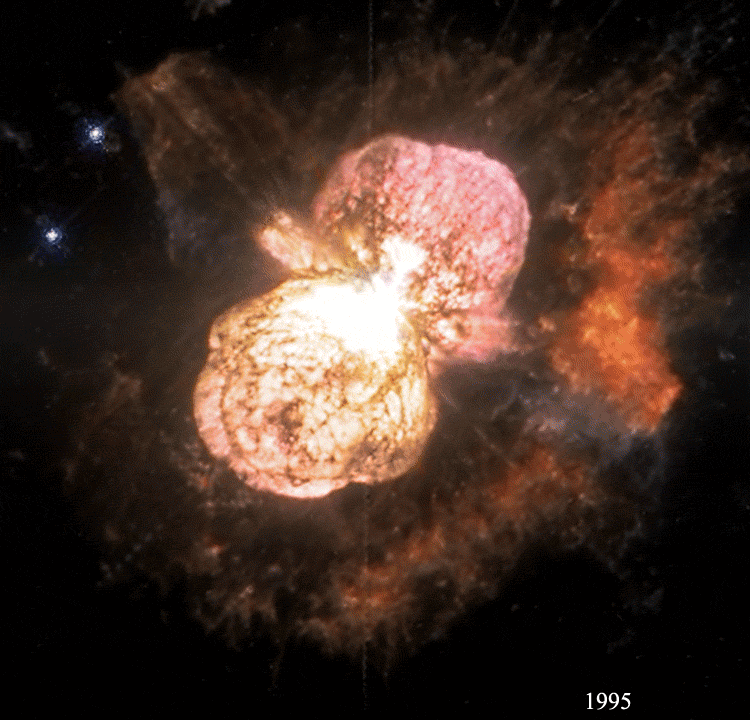
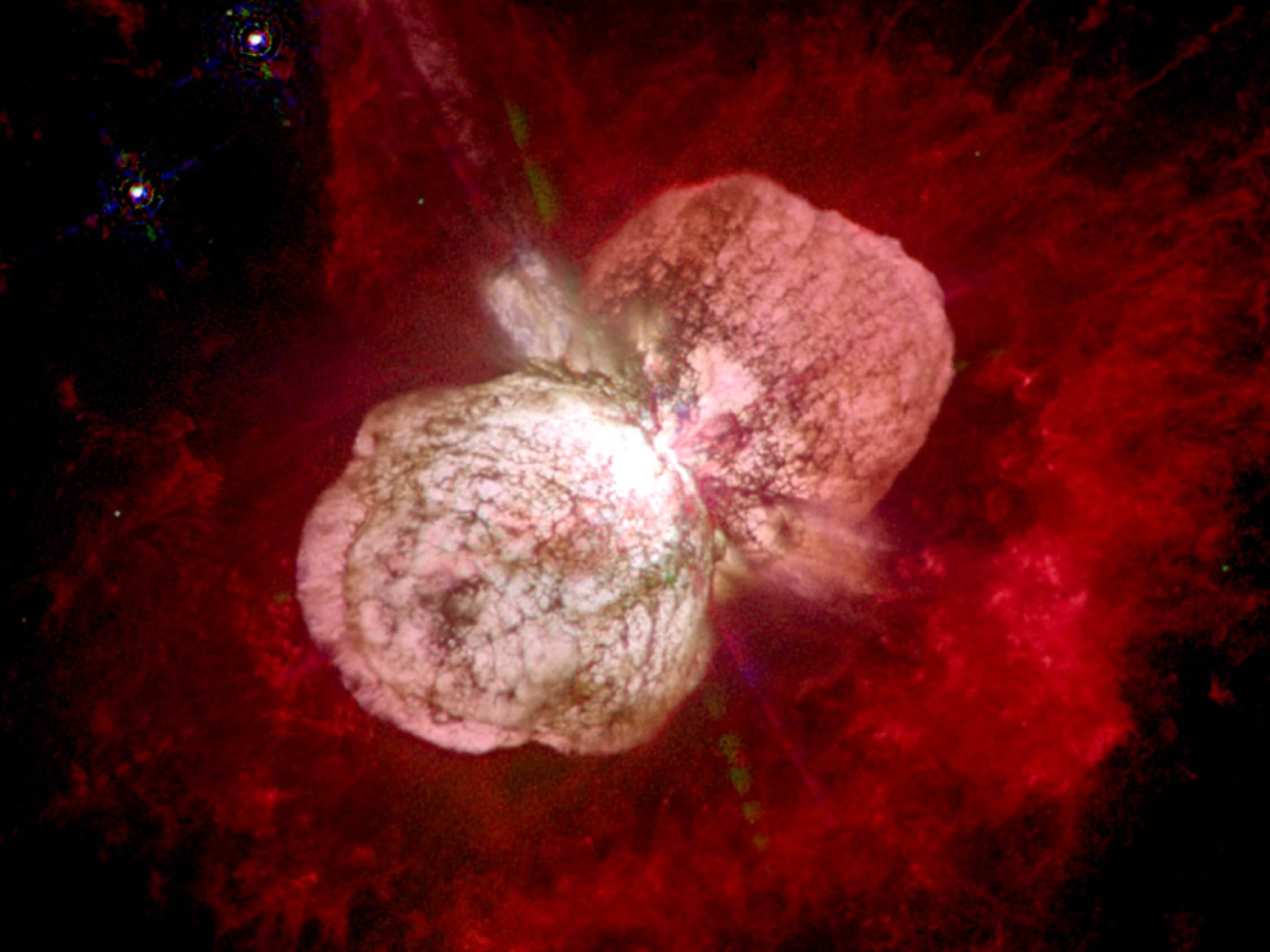
Eta Carinae, one of the most massive stars known and one of the brightest in the night sky. Credit: NASA

The Homunculus Nebula, surrounding Eta Carinae. Credit: ESO, IDA, Danish 1.5 m, R. Gendler, J-E. Ovaldsen, C. Thöne, and C. Feron

Eta Carinae, one of the most massive stars known. Image credit: NASA
While the stars appear unchanging when you take a quick look at the night sky,
there is so much variability out there that astronomers will be busy forever. One prominent example is Eta Carinae,
a star system that erupted in the 19th century for about 20 years, becoming one of the brightest stars you could see in the night sky.
It�s so volatile that it�s a high candidate for a supernova.
by Elizabeth Howell on August 27, 2014
: More space news and info at - astronomers have used the Very Large Telescope Interferometer to image the Eta Carinae star system in the greatest detail ever achieved. They found new and unexpected structures within the binary system, including in the area between the two stars where extremely high velocity stellar winds are colliding. These new insights into this enigmatic star system could lead to a better understanding of the evolution of very massive stars. This colossal binary system consists of two massive stars orbiting each other and is very active, producing stellar winds which travel at velocities of up to ten million kilometers per hour. The zone between the two stars where the winds from each collide is very turbulent, but until now it could not be studied. The power of the Eta Carinae binary pair creates dramatic phenomena. A “Great Eruption” in the system was observed by astronomers in the 1830s. We now know that this was caused by the larger star of the pair expelling huge amounts of gas and dust in a short amount of time, which led to the distinctive lobes - known as the Homunculus Nebula - that we see in the system today. The combined effect of the two stellar winds as they smash into each other at extreme speeds is to create temperatures of millions of degrees and intense deluges of X-ray radiation. The above video zooms in on the massive star system Eta Carinae, located in the Carina Nebula. During the zoom the Homunculus Nebula and finally the violent surroundings of Eta Carinae becomes visible. Lastly, an artist's animation zooms in from outside of the Homunculus Nebula, revealing the system's two massive orbiting stars.
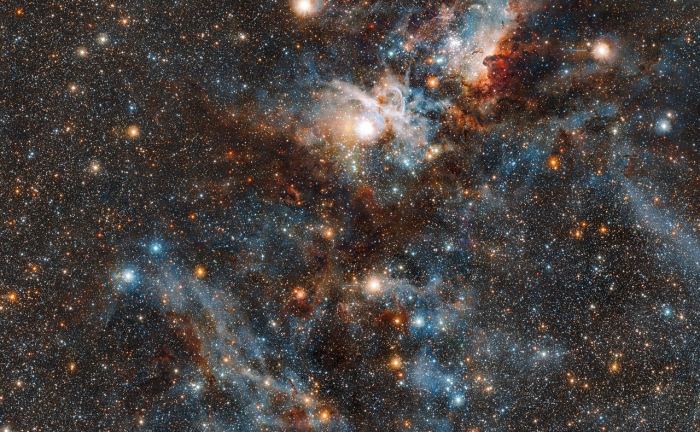
Image of the Carina nebula taken by VISTA, which reveals the dynamic cloud of interstellar matter and thinly spread gas and dust as never before. Credit: ESO/J. Emerson/M. Irwin/J. Lewis
The VISTA telescope has allowed us to peer through the hot gas and dark dust shrouding the spectacular Carina nebula to show us myriad stars, both newborn and in their death throes. This visualisation shows a 3D conversion of images of the Carina Nebula. More information and download options:
This zoom video starts with a wide view of the Milky Way and ends with a close-up look at the Carina Nebula and its surroundings in the constellation of Carina. : More information and download options
The VISTA telescope has allowed us to peer through the hot gas and dark dust shrouding the spectacular Carina nebula to show us myriad stars, both newborn and in their death throes. The video is available in 4K UHD. The ESOcast Light is a series of short videos bringing you the wonders of the Universe in bite-sized pieces. The ESOcast Light episodes will not be replacing the standard, longer ESOcasts, but complement them with current astronomy news and images in ESO press releases. More information and download options: Subscribe to ESOcast in iTunes! Receive future episodes on YouTube by pressing the Subscribe button above or follow us on Vimeo: Watch more ESOcast episodes: Find out how to view and contribute subtitles for the ESOcast in multiple languages, or translate this video on YouTube: Credit: ESO. Directed by: Nico Bartmann. Editing: Nico Bartmann. Web and technical support: Mathias André and Raquel Yumi Shida. Written by: Ivana Kurecic and Calum Turner. Music: tonelabs. Footage and photos: ESO, G. Hüdepohl (atacamaphoto.com), DSS, N. Risinger (skysurvey.org), M. Kornmesser. Executive producer: Lars Lindberg Christensen
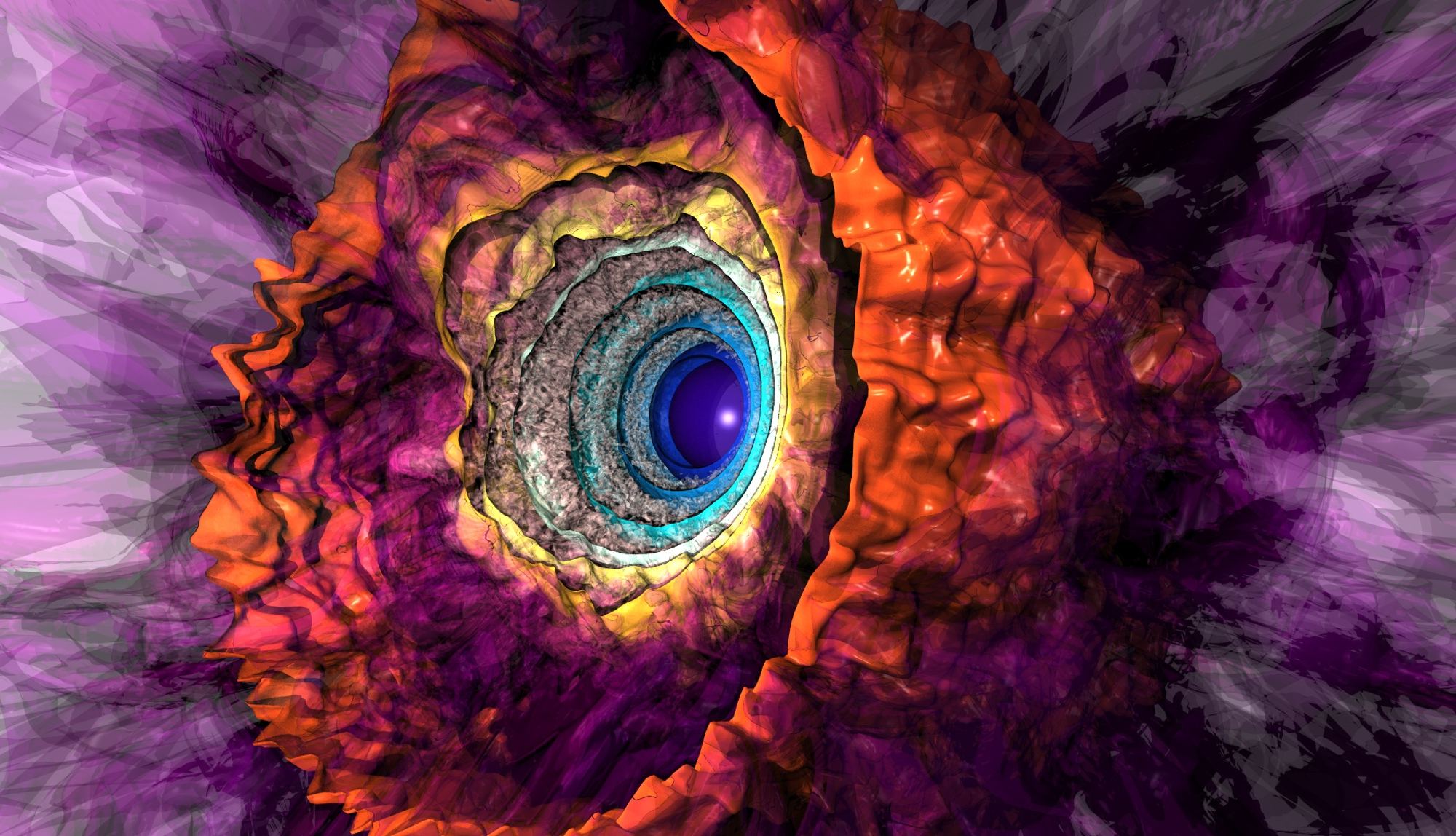
Simulation of outburst from blue variable star. ByJoseph A. Insley, Argonne Leadership Computing Facility and Northern Illinois University
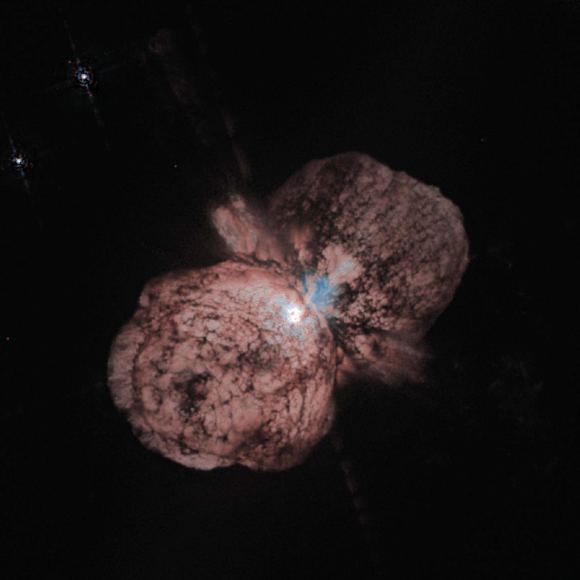
The Homunculus Nebula, created by a massive outburst from the luminous blue variable star Eta Carinae. By Jon Morse (University of Colorado) & NASA Hubble Space Telescope
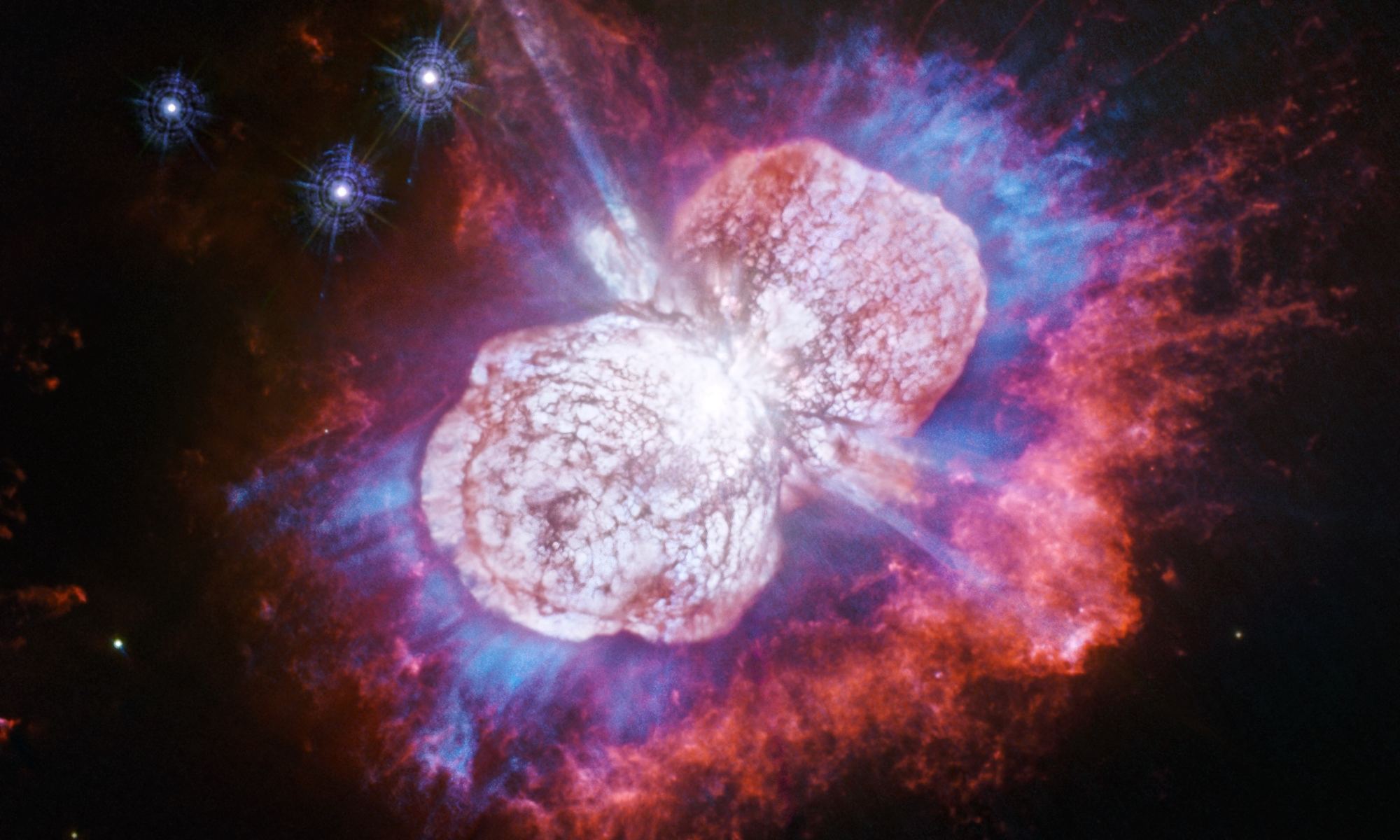
Hubble image of Eta Carinae. Credit: NASA, ESA, N. Smith (University of Arizona), and J. Morse (BoldlyGo Institute)
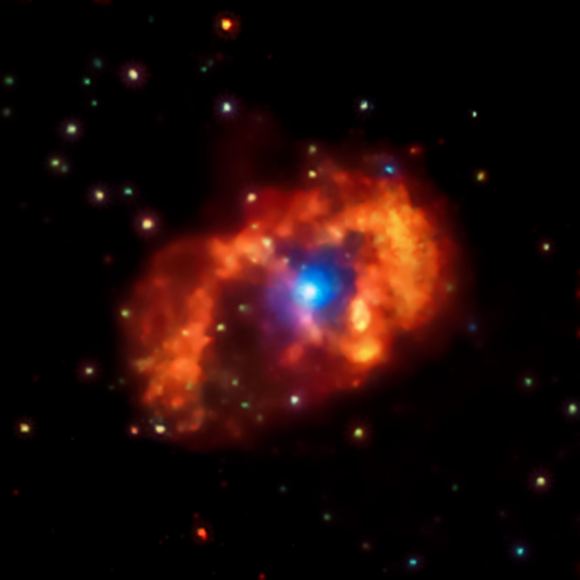
Eta Carinae as seen in X-ray light. Credit: NASA/CXC/GSFC/K.Hamaguchi, et al.
Eta Carinae, is a well known massive, luminous star system located about 7,500 light-years away from the Earth. It is in the southern constellation of Carina, and produced an outburst in the 19th century making it the second-brightest star in the sky. Since then, Eta Car has been well studied but still it holds fascination for astronomers studying explosive star systems. It has two massive stars that come very close to each other every 5.5 years. The system has intense outflows which accelerate charged particles to an amazing speed and can produce energy bursts that can be observed by many telescopes. Studies with the NuSTAR space telescope recently have helped characterize the outbursts and the types of particles sent our way Join Tony Darnell and Carol Christian during Afternoon Astronomy Coffee on July 12 at 3PM Eastern time as they discuss with the investigators, including Kenji Hamaguchi of Goddard Space Flight Center (GSFC) and U. of Maryland (UMBC) and Michael Corcoran of GSFC and Catholic University and Christopher Russell (Pontificia Universidad Católica de Chile) and how they probed Eta Car with NuSTAR to understand the system, and they will describe this interesting NASA mission that probes the high energy universe. Like this content? Please consider becoming a patron: Follow DeepAstronomy on Twitter: @DeepAstronomy Join our free Discord server for always-on chat action! Press Release for today's Topic:
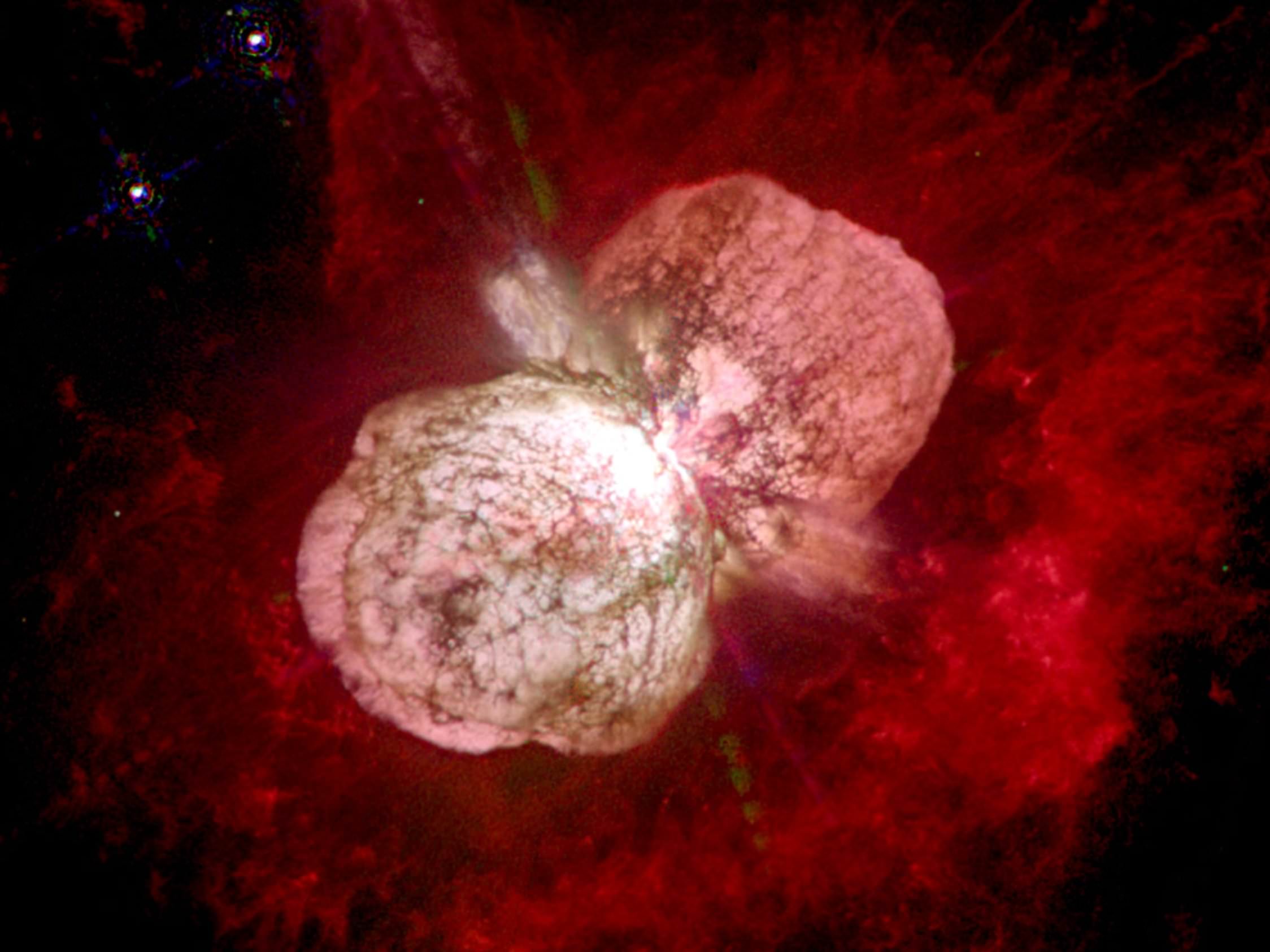
In addition to being one of the most beautiful and frequently photographed objects in the night sky, Eta Carinae also has also had the honor of being one of the sky’s most luminous stars for over a century and a half. In addition, it has been a scientific curiosity since its giant ejected nebula (Homunculus) contains information about its parent star.
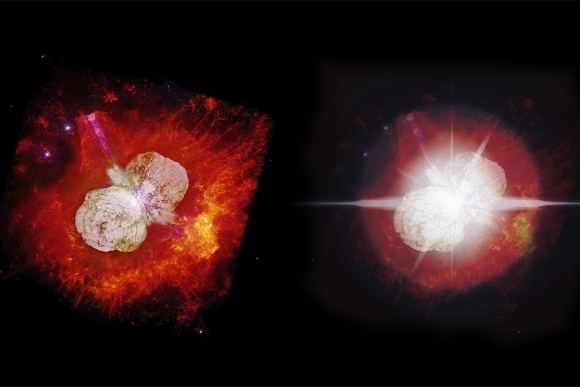
The star Eta Carinae, as it appears today, and within 10 years from now. Credit: University of Montreal
An international team of astronomers has developed a 3D model of a giant cloud ejected by the massive binary system Eta Carinae during its 19th century outburst. Eta Carinae lies about 7,500 light-years away in the southern constellation of Carina and is one of the most massive binary systems astronomers can study in detail. The smaller star is about 30 times the mass of the sun and may be as much as a million times more luminous. The primary star contains about 90 solar masses and emits 5 million times the sun's energy output. Both stars are fated to end their lives in spectacular supernova explosions. Between 1838 and 1845, Eta Carinae underwent a period of unusual variability during which it briefly outshone Canopus, normally the second-brightest star. As a part of this event, which astronomers call the Great Eruption, a gaseous shell containing at least 10 and perhaps as much as 40 times the sun's mass was shot into space. This material forms a twin-lobed dust-filled cloud known as the Homunculus Nebula, which is now about a light-year long and continues to expand at more than 1.3 million mph (2.1 million km/h). Using the European Southern Observatory's Very Large Telescope and its X-Shooter spectrograph, the team imaged near-infrared, visible and ultraviolet wavelengths along 92 separate swaths across the nebula, making the most complete spectral map to date. The researchers have used the spatial and velocity information provided by this data to create the first high-resolution 3D model of the Homunculus Nebula. The shape model was developed using only a single emission line of near-infrared light emitted by molecular hydrogen gas. The characteristic 2.12-micron light shifts in wavelength slightly depending on the speed and direction of the expanding gas, allowing the team to probe even dust-obscured portions of the Homunculus that face away from Earth. More at This video is public domain and can be downloaded at: Like our videos? Subscribe to NASA's Goddard Shorts HD podcast: Or find NASA Goddard Space Flight Center on Facebook: Or find us on Twitter:
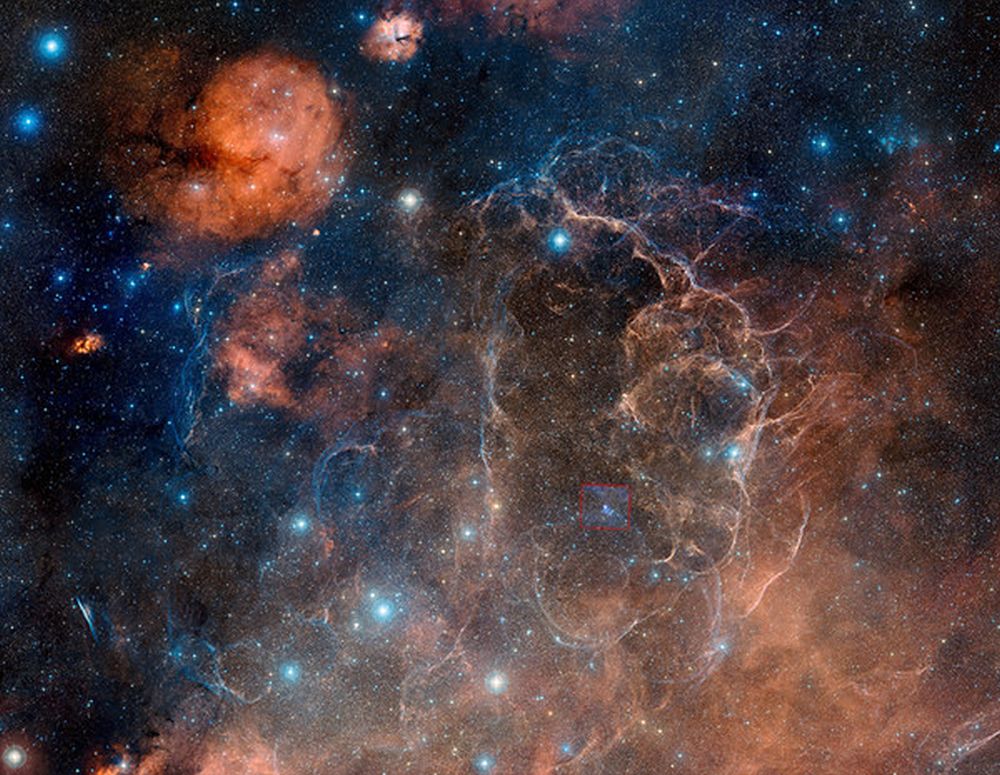
The Vela Nebula
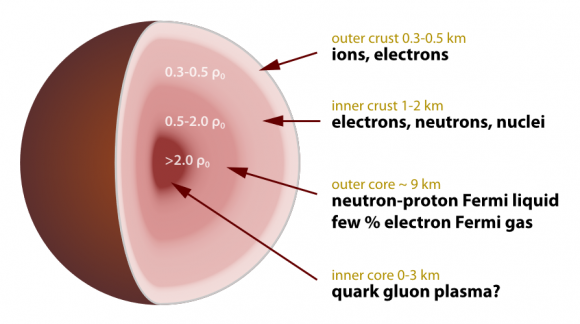
We’re not certain, exactly, what the interior of a neutron star looks like, but mathematical models suggest they’re like this. Image Credit: By Robert Schulze – Own work, CC BY-SA 3.0, But it’s the ‘looking deeper into a neutron star’ that’s the problematic part. Nobody’s ever seen the inside of one.
Pulsars are thought to emit relatively narrow radio beams, shown as green in this animation. If these beams don't sweep toward Earth, astronomers cannot detect the radio signals. Pulsar gamma-ray emission (magenta) is thought to form a broader fan of radiation that can be detected even when the radio beam is unfavorably oriented. (No audio.) Credit: NASA/Fermi/Cruz deWilde
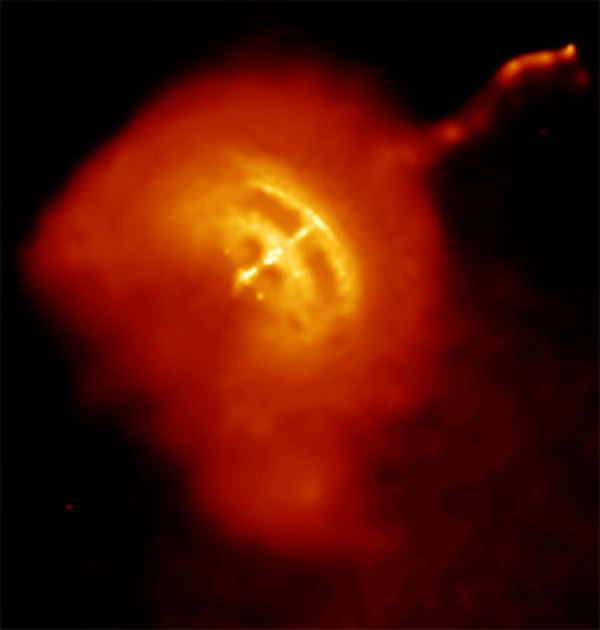
This Chandra image shows the Vela Pulsar as a bright white spot in the middle of the picture, surrounded by hot gas shown in yellow and orange. A jet of material is wiggling from the hot gas in the upper right. Image Credit: By NASA/CXC/PSU/G.Pavlov et al. – Public Domain,
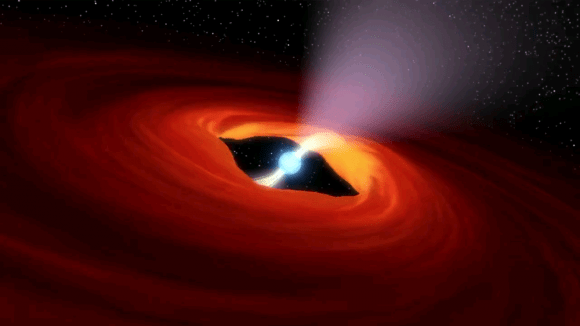
Artist’s illustration of a rotating neutron star, the remnants of a super nova explosion. Credit: NASA, Caltech-JPL
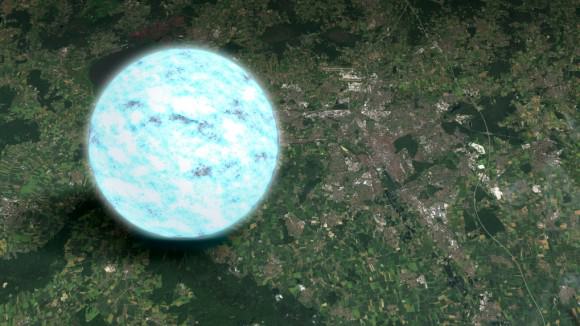
Artist’s illustration of a neutron star, a tiny remnant that remains after its predecessor star explodes. Here, the 12-mile (20-kilometer) sphere is compared with the size of Hannover, Germany. Credit: NASA’s Goddard Space Flight Center
Rotational evolution of the Vela pulsar during the 2016 glitch
A report on the glitch of the vela nebula pulsar